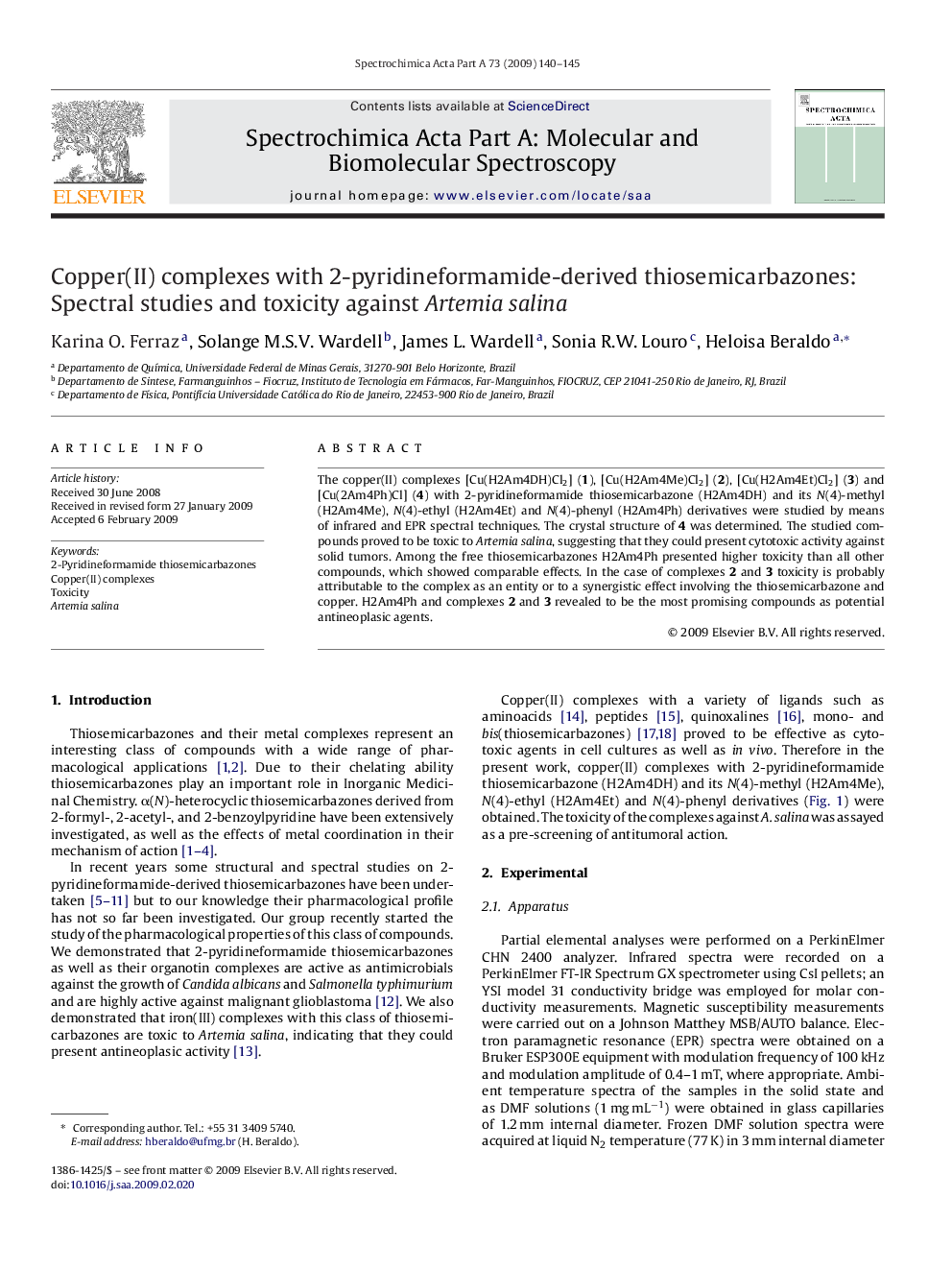| Article ID | Journal | Published Year | Pages | File Type |
|---|---|---|---|---|
| 1234539 | Spectrochimica Acta Part A: Molecular and Biomolecular Spectroscopy | 2009 | 6 Pages |
The copper(II) complexes [Cu(H2Am4DH)Cl2] (1), [Cu(H2Am4Me)Cl2] (2), [Cu(H2Am4Et)Cl2] (3) and [Cu(2Am4Ph)Cl] (4) with 2-pyridineformamide thiosemicarbazone (H2Am4DH) and its N(4)-methyl (H2Am4Me), N(4)-ethyl (H2Am4Et) and N(4)-phenyl (H2Am4Ph) derivatives were studied by means of infrared and EPR spectral techniques. The crystal structure of 4 was determined. The studied compounds proved to be toxic to Artemia salina, suggesting that they could present cytotoxic activity against solid tumors. Among the free thiosemicarbazones H2Am4Ph presented higher toxicity than all other compounds, which showed comparable effects. In the case of complexes 2 and 3 toxicity is probably attributable to the complex as an entity or to a synergistic effect involving the thiosemicarbazone and copper. H2Am4Ph and complexes 2 and 3 revealed to be the most promising compounds as potential antineoplasic agents.
